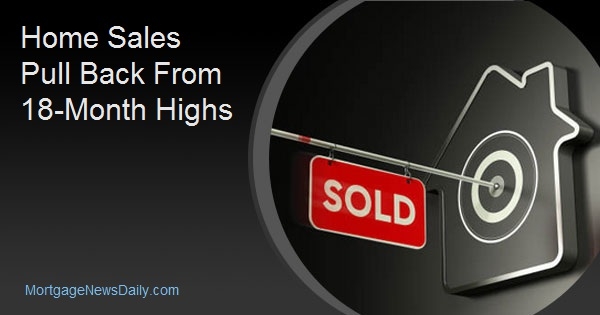Sales of existing homes, which had posted advances in both July and August, fell back in September. The National Association of Realtors® (NAR) said sales of single-family houses, townhouses, condominiums, and cooperative apartments were completed at a seasonally adjusted annual rate of 5.38 million in September compared to a rate of 5.490 million in August, a decline of 2.2 percent. Existing home sales had grown by 2.5 percent in July and 1.3 percent in August. September sales were 3.9 percent higher than the 5.18-million-unit pace in September of 2018.

Sales of single-family homes dropped from an annual rate of 4.91 million in August to 4.78 million in September, but they are also 3.9 percent higher than the previous September. Condo sales rose 1.7 percent to an annual rate of 600,000, a year-over-year gain of 3.4 percent.
Analysts had anticipated a softening in the market in September. Those polled by Econoday had forecast sales in the rage of 5.37 million to 5.55 million with a consensus of 5.45 million units.
Lawrence Yun, NAR's chief economist, said sales have not increased commensurate with the historically low mortgage rates. This, he said, was due in part to a low level of new housing options. "We must continue to beat the drum for more inventory," said Yun, who has called for additional home construction for over a year. "Home prices are rising too rapidly because of the housing shortage, and this lack of inventory is preventing home sales growth potential."
The median existing-home price for all housing types in September was $272,100, up 5.9 percent from the median of $256,900 in September 2018. Prices were higher in all four major regions. September marks the 91st straight month of annual price gains. The median existing single-family home price was $275,100, a 6.1 percent annual increase while a 4.5 percent gain brought the median sales price for condos to $248,600.
Total housing inventory at the end of September sat at 1.83 million, essentially unchanged from August but 2.7 percent lower than a year earlier. The September stock of available homes was estimated at a 4.1-month supply at the current rate of sales, higher than the 4.0-month supply a month earlier but down from 4.4 months in September 2018. Properties typically remained on the market for 32 days in September, up from 31 days in August and the same as the marketing period in September 2018. Forty-nine percent of homes sold during the month were on the market for less than a month.
First-time buyers were responsible for 33 percent of sales, up 2 percentage points from August and 1 point from the previous September. Investors or second home buyers accounted for 14 percent of sales and 17 percent of transactions were all-cash compared to 19 percent and 21 percent in the two earlier periods.
"For families on the sidelines thinking about buying a home, current rates are making the climate extremely favorable in markets across the country," said NAR President John Smaby. "These traditionally low rates make it that much easier to qualify for a mortgage, and they also open up various housing selections to buyers everywhere."
Existing-home sales in September dropped in every region compared to the August, however, three of the regions posted annual gains. Sales in the Northeast fell 2.8 percent from August to an annual rate of 690,000 units, a 1.5 percent increase over the prior September. The median price in the region was $301,100, up 5.2 percent year-over-year. The Midwest saw existing-home sales decline by 4.1 percent to 1.27 million, the sales rate was unchanged from the prior September. The median price in the Midwest was $213,500, 7.2 percent higher than a year ago.
Sales in the South were down 2.1 percent to an annual rate of 2.28 million, gaining 6.0 percent year-over-year. The median price in the South was $237,300, representing an appreciation of 6.3 percent. The West saw sales dip 0.9 percent, but the annual rate of 1.14 million was up 5.6 percent from last September. The median price was $403,600, a 4.5 gain.







